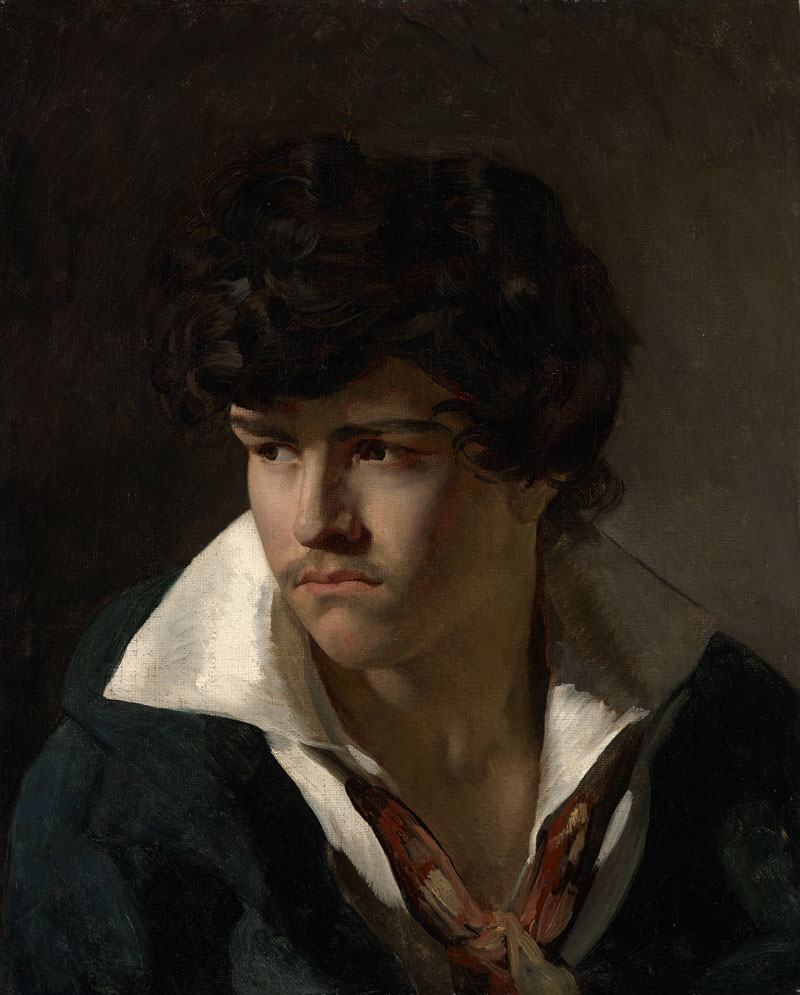New highlights every day from TEFAF Maastricht
Portrait of a young man with an open collar
(c. 1817), Théodore Géricault
This rediscovered portrait was long thought to be a portrait of the young Delacroix, and although the jury is still out the evidence is compelling. The dark, brooding, deep-set eyes and the sulky cast of mouth appear to resemble two self-portraits, and the younger artist is known to have modelled for Géricault in preparatory studies for The Raft of the Medusa (1818–19). Alexandre Dumas also records the artist’s abundant black hair and wild, feline eyes.
Géricault visited Rome in 1817, returning to Paris and a hothouse of artistic and political ferment. Surrounded by painters, sculptors, writers and Bonapartists near Montmartre, he drew on contemporary events and the world around him for his subjects, also creating smaller paintings and magnificent drawings. This sitter’s broad white collar and low-knotted colourful scarf is typical of the costume sported by the artists of the day, and the portrait is striking for its informality and directness, which suggests a familiarity between artist and sitter. Moreover, the painting is said to have belonged to Delacroix and then been given to his maid, Julie Colin.
Selected by Susan Moore.



